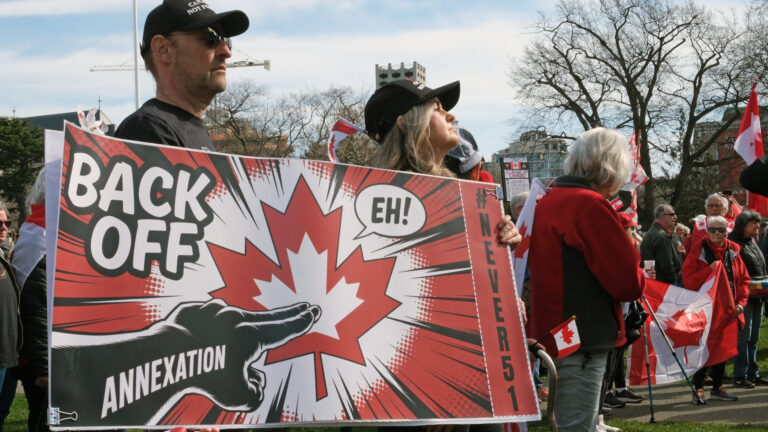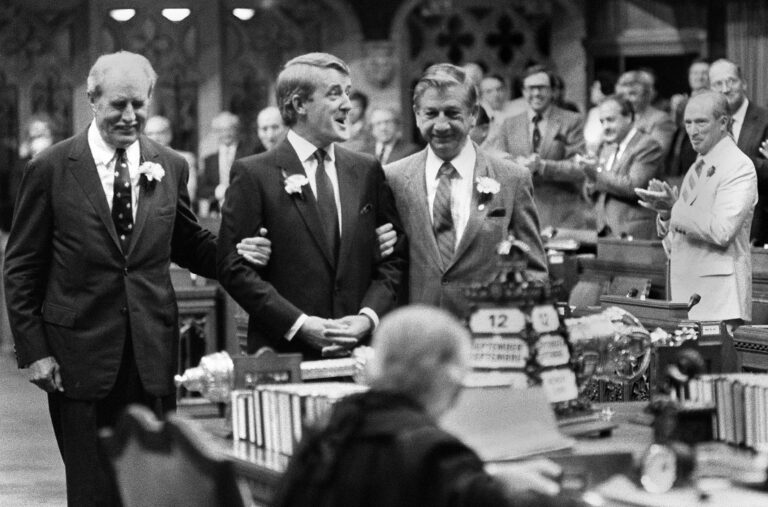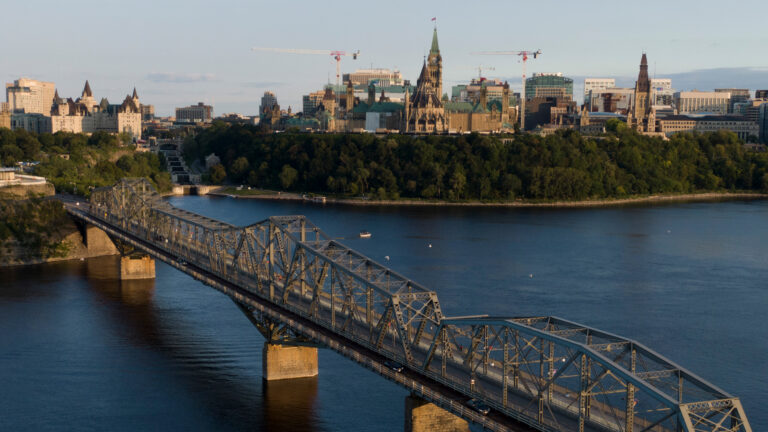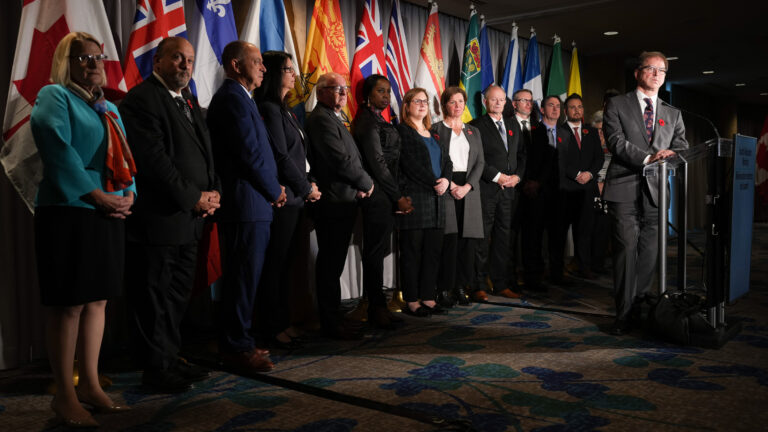This election is an opportunity for voters to signal that Canadians can no longer accept boutique regional prescriptions to national and global phenomena. The federal parties need to put forward a plan for rebuilding the federation and its institutions so that the federal government has the tools and capacity to drive a truly national agenda in an ever-changing world. Voters need to demand a federal government that will make the country more productive and efficient, will support new policy innovation and renew the public service.
Throughout the pandemic, the Liberal government, worried about accusations of overreaching into provincial responsibility for health care, gave provinces and municipalities great leeway to respond to local conditions. Instead, its focus was on the broader issues, such as vaccine acquisition and procurement, leaving the notion of a national co-ordinated approach to lockdowns, travel and other restrictions for others to comment upon.
The results have been mixed, depending upon where you live, and reflect a weakened federal government and a country focused on regional issues rather than national priorities. Trust in our government public institutions has continued to fall.
Former prime ministers Pierre Trudeau, Brian Mulroney, Jean Chrétien and Paul Martin all had national agendas that called for deep federal and provincial collaboration to manage the national policy issues of the day. Some intergovernmental friction was inevitable. Repatriation of the Constitution, free trade, deficit elimination and the introduction of the Canada Health and Social Transfer all required a measure of the carrot and stick technique by federal actors.
Former prime minister Stephen Harper, on the other hand, pushed the federal rudder hard against the winds of federal intrusion into provincial matters. This was a philosophy supported by some provincial governments in the West as well as Quebec, albeit for different reasons.
Harper viewed federalism as two jurisdictions operating within their constitutional boxes, which in practice led to a significant re-engineering of the federal government itself.
Step one was to reduce the federal spending power. The GST was cut by two points. A federal government with reduced fiscal capacity was automatically limited in its policy options. Federal intrusion would be held in check by its ability (or lack thereof) to write cheques.
Step two was to tame and isolate the public service. The Federal Accountability Act was omnibus legislation that turned deputy ministers into accounting officers and shifted the balance of influence from the intellectual policy and economist class to the comptrollership community. Public servants were no longer in demand for policy advice but were counted on for process, compliance and reporting.
Changes to proactive disclosures and introduction of travel plans meant public servants no longer regularly engaged provincial and territorial counterparts, Indigenous communities, industry associations, think tanks or professional communities of practice. Conferences were done away with. Places and spaces for knowledge exchange and best practices to fuel innovation were greatly reduced. More than a decade later, the public service is more distant and more isolated from the communities it serves, and its public interest antennae is arguably weaker.
For example, the Federal Accountability Act was also supported by a suite of policy changes to the human resources system, which included adjusting the mandate of the Public Service Commission, putting individual deputy ministers in charge of “talent management,” changing the leadership competencies on how executives were selected as well as the values and ethics codes.
This was followed up with the “deficit reduction action plan,” which made targeted cuts to policy, human resource and administrative functions, along with enterprise-wide projects to change pay systems and consolidate IT infrastructure.
In addition, scientists and Statistics Canada had their limited independence further reduced through a one/two punch of restrictions on publications and appearances, as well as the removal of the long-form census.
Step three was to move away from co-operative federalism by eliminating first ministers’ conferences. Co-operative federalism, according to the Centre for Constitutional Studies, “…is a concept of federalism based on the federal and provincial governments working together to achieve mutual goals.” It was replaced by “open federalism” or “transactional federalism.” Large, intergovernmental plans that embraced a “Team Canada” approach were replaced with bilateral negotiations between the federal government and individual provinces. The intergovernmental apparatus was significantly reduced and brought back into the Prime Minister’s Office and, by extension, premiers’ offices.
The oxygen of co-operative federalism and intergovernmental relations had been the free exchange of information – not cabinet secrets. The oxygen of transactional federalism came in the form of a single diving tank with two masks – one for the prime minister and another for each premier.
In 2015, Justin Trudeau’s government inherited a much different federal government and public service than the one left by Paul Martin. The new government of “sunny ways” arrived with big ideas and an even bigger agenda. It was met by a much tamer public service, more isolated from civil society. Post-Harper, the federal government was much less intrusive or activist in provincial matters, and its public service focused on compliance, reporting and risk mitigation.
Nevertheless, the federal government snapped into a new posture by delivering a Pan-Canadian Framework on Clean Growth and Climate Change, a tax on carbon and a significant legislative agenda to repair the damage of the Harper government, which had dismantled the environmental regime in order to help build more pipelines.
Many successes were achieved; however, it revealed significant strain on a co-operative model of federalism that had not been used in more than a decade. Litigation ensued over the imposition of a federal carbon tax by Alberta, Saskatchewan and Ontario, and a rising sentiment of western (and Northwest Territories) alienation reared its head. While the federal government ultimately won its case at the Supreme Court, co-operative federalism was seemingly put on pause and the Trudeau government reverted to a much more transactional or Harper-light approach, as evidenced by the pandemic response and early child-care agreements.
While the Trudeau government has reintroduced the long-form census and re-embraced science and evidenced-based decision-making, important barriers remain that limit the potential and capacity of the federal government and its key institutions – including the public service.
A government mandate focused on three areas could better position the country for success.
First, if raising taxes remains counter to an economic recovery, then making the country more efficient and productive must be made a priority.
Canada needs to focus on how the federation can help grow GDP through free trade, meet greenhouse gas reduction targets through regulatory harmonization, as well as other nation-building projects in the areas of digital delivery, telecommunication, energy and transportation.
This will require first ministers to get on the same page. The job of the prime minister will be to judiciously use sticks and carrots to make it so.
Second, a new government must remove the barriers to innovation and renewal within the public service to support a new era of policy innovation and co-operative federalism. The Federal Accountability Act must be repealed and replaced with a “good governance act” to modernize federal institutions and reconnect the public service to civil society while incubating the best ideas for first ministers to choose from.
Third, a new government needs to turn its attention to renewing the federal public service. It needs to determine how the public institutions of the federation can adapt to a post-COVID environment, building trust by bringing together the Canadian values of openness, inclusion and diversity to solve the challenges of today and the future.
This election needs to be about building a better Canada, and making sure we have the ability to do so.












